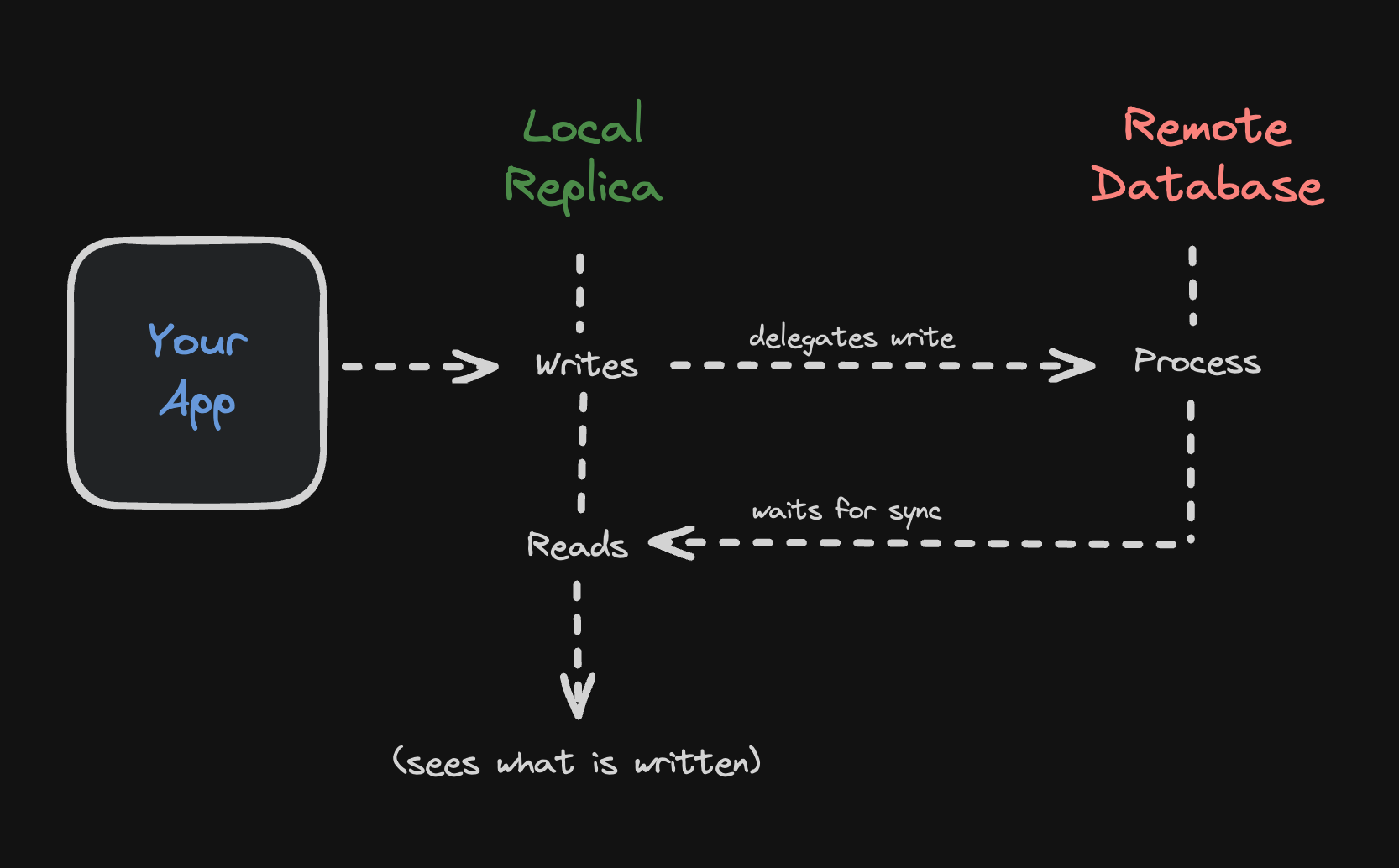How it works
-
You configure a local file to be your main database.
- The
urlparameter in the client configuration.
- The
-
You configure a remote database to sync with.
- The
syncUrlparameter in the client configuration.
- The
-
You read from a database:
- Reads are always served from the local replica configured at
url.
- Reads are always served from the local replica configured at
-
You write to a database:
- Writes are sent to the remote primary database configured at
syncUrlby default. - You can write locally if you set the
offlineconfig option totrue. - Any write transactions with reads are also sent to the remote primary database.
- Once the write is successful, the local database is updated with the changes automatically (read your own writes — can be disabled).
- Writes are sent to the remote primary database configured at
Periodic sync
You can automatically sync data to your embedded replica using the periodic sync interval property. Simply pass thesyncInterval parameter when instantiating the client:
Read your writes
Embedded Replicas also will guarantee read-your-writes semantics. What that means in practice is that after a write returns successfully, the replica that initiated the write will always be able to see the new data right away, even if it never callssync().
Other replicas will see the new data when they call sync(), or at the next sync period, if Periodic Sync is used.

Encryption at rest
Embedded Replicas support encryption at rest with one of the libSQL client SDKs. Simply pass theencryptionKey parameter when instantiating the client:
The encryption key used should be generated and managed by you.
Usage
To use embedded replicas, you need to create a client with asyncUrl parameter. This parameter specifies the URL of the remote Turso database that the client will sync with:
You should call
.sync() in the background whenever your application wants to sync the remote and local embedded replica. For example, you can call it every 5 minutes or every time the application starts.Things to know
- Do not open the local database while the embedded replica is syncing. This can lead to data corruption.
- In certain contexts, such as serverless environments without a filesystem, you can’t use embedded replicas.
- There are a couple scenarios where you may sync more frames than you might
expect.
- A write that causes the internal btree to split at any node would cause many new frames to be written to the replication log.
- A server restart that left the on-disk wal in dirty state would regenerate the replication log and sync additional frames.
- Removing/invalidating the local files on disk could cause the embedded replica to re-sync from scratch.
- One frame equals 4kB of data (one on disk page frame), so if you write a 1 byte row, it will always show up as a 4kB write since that is the unit in which libsql writes with.
Deployment Guides
Turso + Fly
Deploy a JavaScript project with Embedded Replicas to Fly.io
Turso + Koyeb
Deploy a JavaScript/Rust project with Embedded Replicas to Koyeb
Turso + Railway
Deploy a JavaScript/Rust project with Embedded Replicas to Railway
Turso + Render
Deploy a JavaScript project with Embedded Replicas to Render
Turso + Linode by Akamai
Deploy a JavaScript/Rust project with Embedded Replicas to Akamai